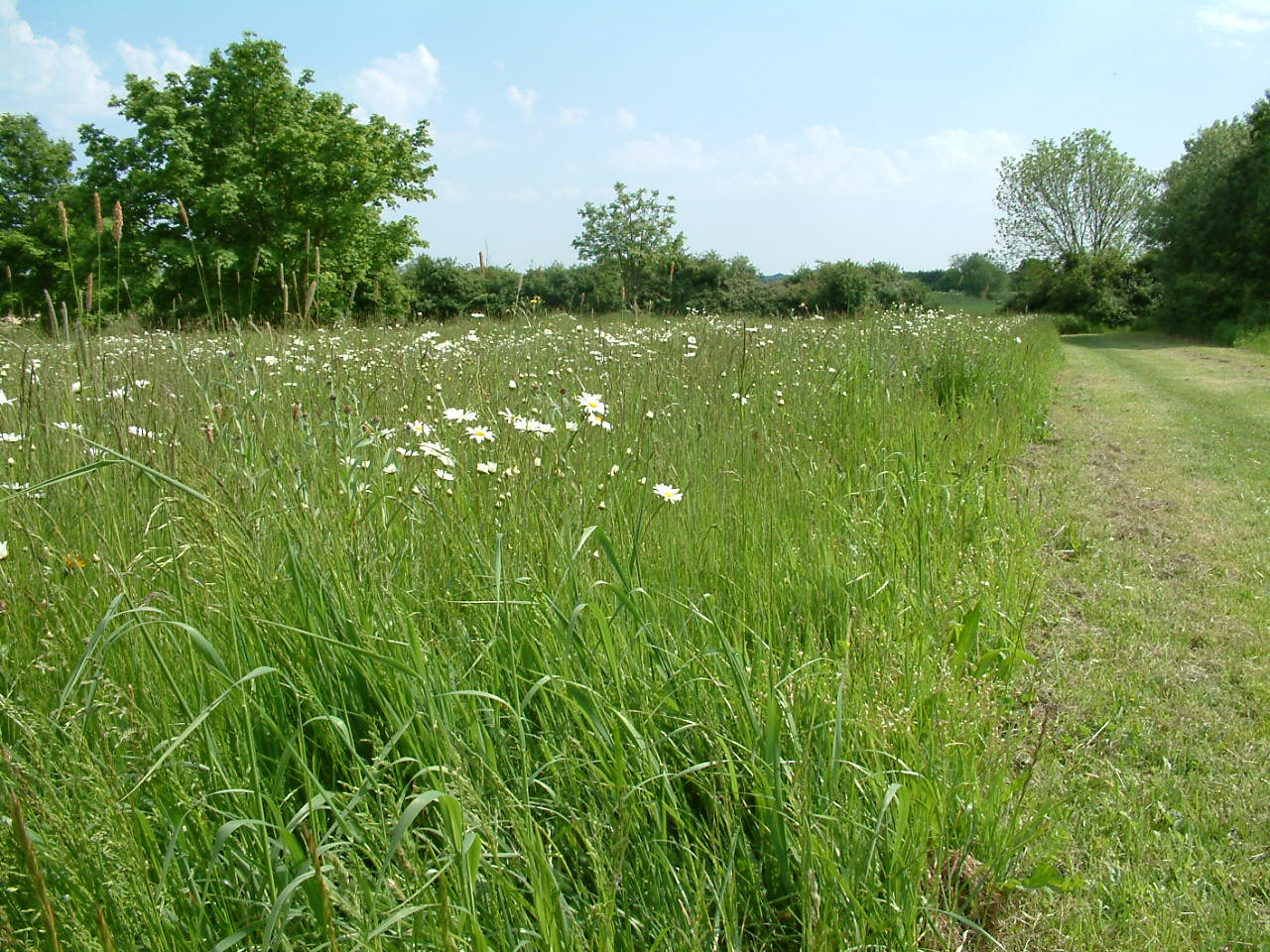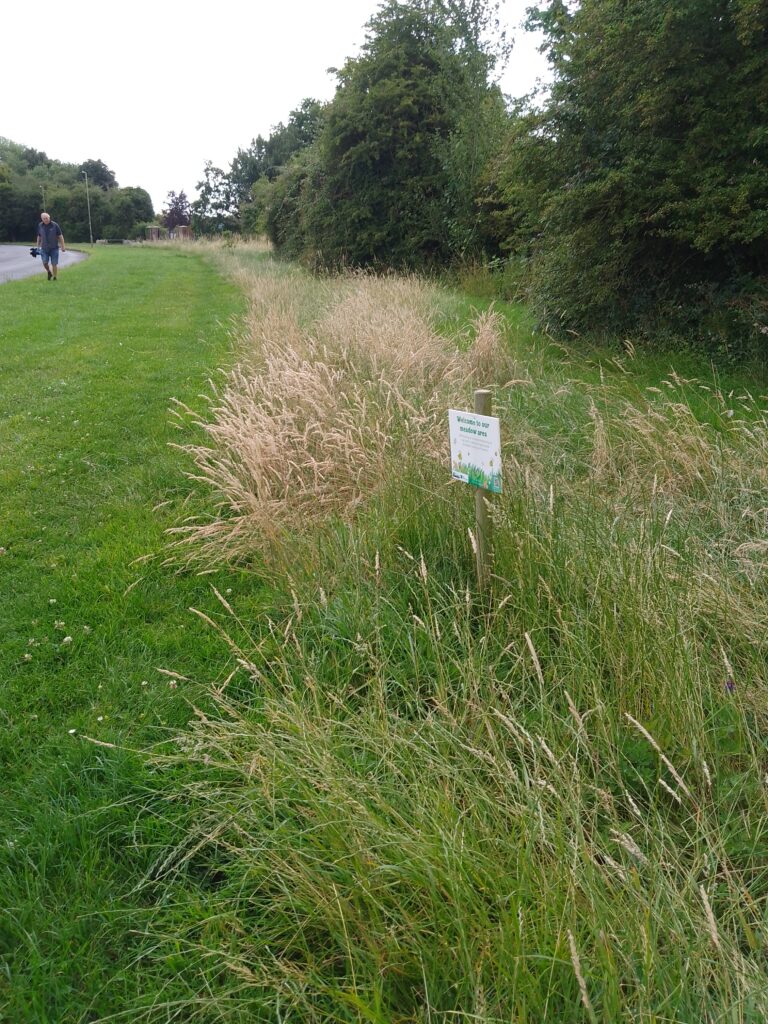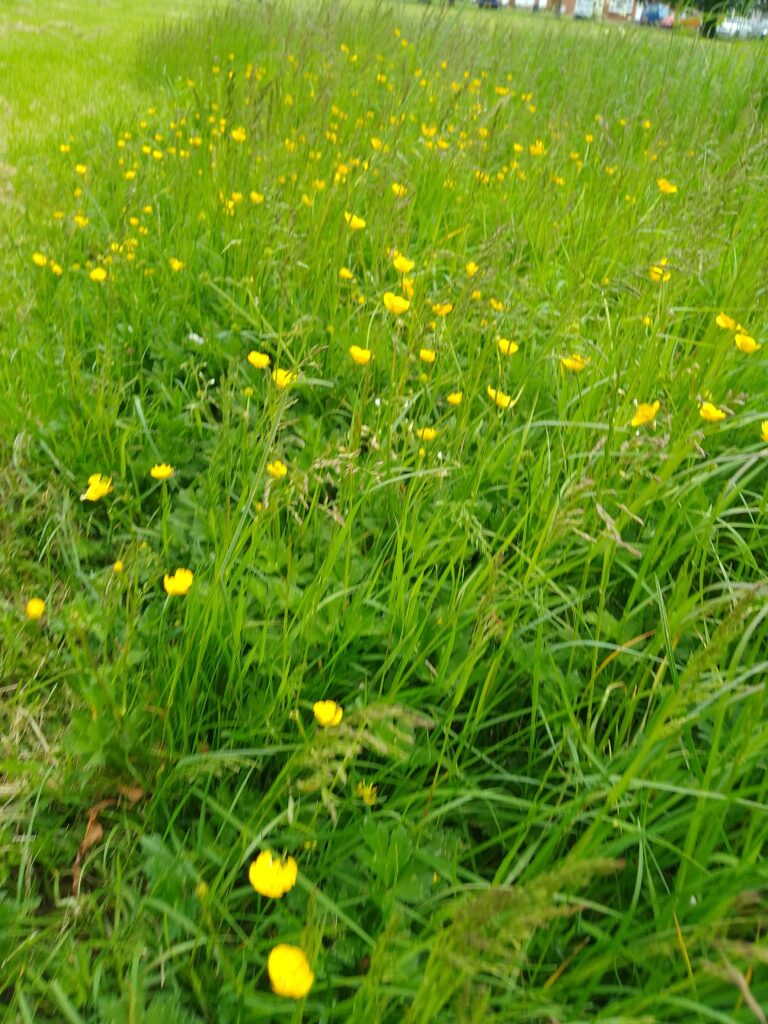
Our meadow areas for nature recovery
The World Wildlife Fund says of wildflower meadows
“Wildflowers meadows are an amazing habitat. A haven for wildlife… wildflowers provide bees, butterflies and other pollinators with food throughout the year. On a single day in summer, one acre of wildflower meadow can contain 3 million flowers, producing 1 kg of nectar sugar.”
When allowed to grow, grasses and wildflowers also offer shelter for small mammals, birds, and amphibians as they forage, reproduce, and hibernate.
- Unmown plants can complete their natural life cycles, disperse their seeds and spread and regenerate naturally.
- Healthy meadows have dense, complex root systems, which stabilise the soil and mitigate flooding by soaking up rainwater, which in turn stops sediment and nutrients from washing away into our water courses.
- Soil health improves as organic matter accumulates, fostering a more resilient and balanced ecosystem. Mowing less frequently also carbon reduces our carbon emissions.
What we are doing on land we own or manage to encourage nature recovery
In 2022 we took the decision to establish a meadow management approach to selected green spaces and not to mow them during the spring and summer months. Since then, we have gradually added more sites to our meadow areas and extended some existing ones, following recommendations from residents, town and parish councils and council members. We now have 39,059m² of land we manage for biodiversity.
We manage 2 types of meadow area on council owned land, these are:
- ‘Let it bee’ Meadow areas – which are cut twice a year, once in early spring and once at the end of the summer, allowing the naturally existing plants to thrive. We are monitoring these areas to see how they develop.
- Wildflower meadow areas – these are areas which have been sown with wildflower seeds. We aim to cut these three times; at the beginning and end of the growing season in March and October, plus a cut and rake up in September once the wildflowers have set seed. This helps to ensure that grass doesn’t dominate the area and gives wildflowers the chance to grow and complete their lifecycle.
‘Let it bee’ Meadow Areas
We have chosen locations which do not impact on pedestrians or sightlines for drivers and are also near shorter grass areas and pathways for people wishing to exercise, play or relax.


See the maps below:
- Berinsfield – Fane Drive (extended for 2025)
- Didcot – Fleet Meadow
- Didcot – Foxhall Manor (added for 2025)
- Didcot – Mowbray Fields
- Shepherd’s Green
- Wallingford – Radnor Road (extended to Radnor Road North for 2025)
- Wallingford – Wallingford Cemetery
- Woodcote – Wittenham Close
Wildflower Meadow Areas

If you click on following links you will be able to download the maps showing our wildflower areas for:
- Didcot – Tamar Way (extended for 2025)
Our other areas for nature recovery
At our Countryside Sites, Riverside Meadows, Wallingford Castle Meadows and Mowbray Fields Nature Reserve we have been working to restore and create new habitats for wildlife. These sites are owned by us and managed in partnership by the Earth Trust. Across the sites we are restoring species rich hay meadows, have planted new areas of woodland, restored wetlands, and encouraged many species including bats, otters, birds and orchids.
How can you get involved?
Volunteer to work with the Earth Trust to manage our Countryside Sites, there are a variety of activities to get involved in and gain experience in, from hedge laying to litter picking and butterfly surveying.
In your garden
If you have a garden, you can do your bit for the environment also. The RSPB says: “Mowing your lawn less… makes a big difference to the wildlife in your garden. Create a mini jungle for beetles and other small creatures to wander and where sparrows and goldfinches can come to feed on the seeds. The grasses will set seed, wildflowers can bloom and provide nectar, and the longer stems will create a sheltered microclimate.”
Tips for homeowners with lawns
Contact us - Parks
01235 422404
(Text phone users add 18001 before dialing)

